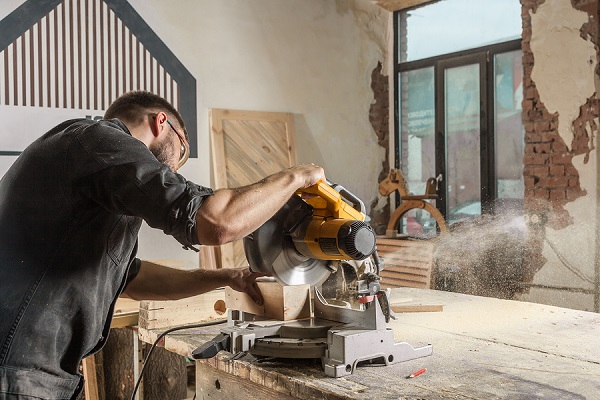Is wood dust more dangerous than formaldehyde?

Breathing airborne wood particles as a result of sanding or cutting may be deadly, with wood dust and the formaldehyde in wood products both classified as Group 1 carcinogens.
However the danger of formaldehyde and other resins in Australian-made wood products has been overstated according to managing director of Australian Forest and Wood Products, Ric Sinclair.
He said that inhaling dust is the main safety issue associated with woodworking in Australia, with the greatest risk around the particulate size.
“Sanding and sawing are going to produce finer particles and finer particles always pose a greater hazard risk,” Sinclair said.
The result of wood dust exposure can be skin disorders such as allergic dermatitis, asthma and impaired lung function, nose irritation, rhinitis (runny nose), violent sneezing, blocked noses and nose bleeds, throat irritation, sore and watering eyes and potentially nasal cancer, according to Safe Work Australia (SWA).
Formaldehyde in wood
Formaldehyde is a naturally occurring molecule that naturally occurs in wood but is also added in glues and resins used in some wood products, according to Sinclair.
Wood products that adhere to Australian Standards for formaldehyde emissions have a classification rating from Super E0 to E3 (see table below), as described in a formaldehyde fact sheet by the Engineered Wood Products Association of Australia (EWPAA).
Speaking of added formaldehyde in composite products such as MDF, particleboard or LVL, Sinclair said that products rated to Super E0, E0 or E1 emissions levels “are at such low concentrations of formaldehyde that they should pose no significant risk to wood workers”.
A report and summary from Australian Government’s National Industrial Chemicals Notification Assessment Scheme (NICNAS) recommends only [Super E0], E0 and E1 rated wood products be used.
Furthermore, the 2016 summary of the 2006 report recommends the reduction of workplace formaldehyde exposure maximums from 1 ppm eight-hour time weighted average (TWA) and 2 ppm short-term exposure limit (STEL) to 0.3 ppm TWA and 0.6 STEL.
“Humans experience sensory irritation (eye, nose and respiratory tract irritation) at levels in air of 0.5 ppm formaldehyde and above,” the report says, adding that “The best available [Lowered Observed Effect Level] LOEL for non-cancer effects in humans is 0.5 ppm for sensory irritation”
“This level provides adequate protection against discomfort of irritation, but also provides a high level of protection against cancer.”
At time of writing, Safe Work Australia is considering the recommended standard, according to the NICNAS summary.
Minimising Wood Dust and Formaldehyde Risk:
Performing a risk assessment and following the hierarchy of control is critical, with elimination of the hazard a priority and PPE only to be used as a last line of defence.
Suppliers of wood products should provide a safety data sheet (SDS) detailing any potential health effects of the wood being used. If possible, use an alternative, less hazardous wood product.
When working with wood, SWA states you should try and use tools and work processes that minimise the dust being produced, such as a planer instead of a sander. Also ensure tools and workspaces have appropriate dust extraction and ventilation systems and that they are checked and maintained regularly. Workplace monitoring of dust levels may also be necessary.
Compressed air should not be used to clean work areas, skin or clothes of dust, but rather use a damp cloth or industrial vacuum cleaner fitted with a HEPA filter.
A well-fitted Class 1 respirator adhering to Australian Standards should also be used if other dust control measures are not practical – such as the ProChoice Half Mask with ABEK1 filters.
However only 61 per cent of people who might be exposed to formaldehyde at work are using local exhaust ventilation or personal protective equipment (PPE) as safety controls, according to Safe Work Australia’s 2014 Australian Workplace Exposure Study (AWES) on Formaldehyde.
And of those 61 per cent, many are using paper masks which might protect against wood dust inhalation but “are unlikely to provide effective protection against formaldehyde exposures”.
Of those identified by the AWES as having probable exposure to formaldehyde at work, particle board was the main culprit with over half of probable exposures working in construction.




































































